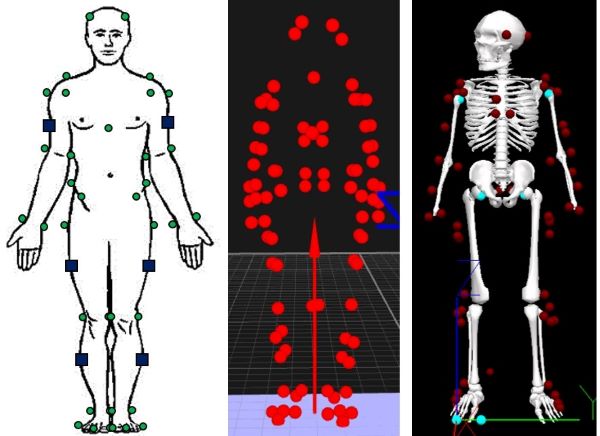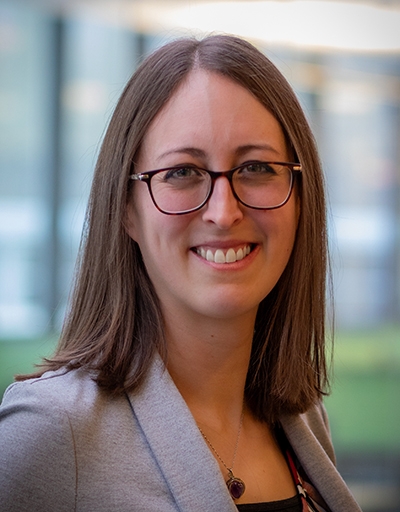Dr. Schinkel-Ivy talks movement and healthy aging
Dr. Alison Schinkel-Ivy, associate professor, physical and health education, received an NSERC Discovery Grant in the amount of $120,000 over five years for her research titled Towards an improved understanding of aging: Quantifying changes in movement during healthy aging using integrated biomechanical approach. Dr. Schinkel-Ivy will receive an additional one-year $12,500 supplement as part of the Discovery Launch Supplement program aimed at supporting early career researchers who are establishing their research program.
The NU News sat down with Dr. Schinkel-Ivy to discuss her research project and how the NSERC Discovery Grant will contribute to the study.
Interview
Can you tell us a bit about your study “Towards an improved understanding of aging: Quantifying changes in movement during healthy aging using integrated biomechanical approach”?
In Canada, our population is aging. Right now, about one in four people in Canada are over the age of 60, and this number is going to continue to increase. We know that as we age, we experience physical declines in strength, balance and range of motion. As we experience these declines, it increases our risk of falls and that could lead to a loss of functional independence or loss of quality of life. This will have an effect on people’s personal lives, physically, emotionally and financially. It also risks larger societal implications such as the costs of long-term care and hospitalizations.
This study is adding to what we already know about physical changes in aging with two particular aspects. My team will be using an integrated biomechanical approach, by measuring forces under the feet, motion of the body and how the muscles are firing. We will also use these signals to estimate measures of balance. Most studies have only looked at one of those signals at a time, but our plan is to integrate all those signals together to gain a more comprehensive picture of how movement is controlled and coordinated, and how this changes with healthy aging.
The other aspect is that a lot of work that has already been done has focused on standing and walking. Those are pretty pivotal tasks to be able to continue living independently as we age, but there are many other tasks that we need to be able to perform to maintain our independence, such as lifting, standing up from a chair and turning and sitting down. We’re going to be expanding into this wider range of tasks to gain a more representative picture of what people are doing in their everyday lives.
What do you hope to accomplish with this research?
The goal of my research program is to investigate age related changes in movement during functional tasks. “Functional tasks” refers to things like lifting a box, standing up from a chair or sitting down into a chair that we are constantly performing in our everyday lives. We will be looking at a number of different aspects of movement like balance, movement patterns and coordination, and how muscles are firing to produce that motion. By integrating all of those together, we’ll achieve a comprehensive picture of how movement changes as people are getting older. We can then use this to develop longer-term solutions to help people maintain their independence and quality of life as they age.
What are the long-term goals of this research project?
Our very general goal is to improve our understanding of healthy aging and then within that, I’d like to identify ways to address different impairments that emerge with aging. This work is going to provide us with the foundation to then identify the underlying causes of these impairments. From there, we can figure out how to actually address them. This program is the first step in all of that, and then through future grants we will try to address those longer-term solutions.

What has influenced/inspired you to conduct this research?
Part of my academic journey included two years working at the Toronto Rehabilitation Institute. That was my first experience working with a population that wasn’t classified as young, healthy adults and it was a vastly different experience. I was working with people who had previously experienced a stroke, and it was so rewarding and inspiring to work with these individuals who are still continuing on their road to recovery. That steered me in this direction, but my focus has changed a little bit now. I’m now working with older adults who are still community dwelling and functionally independent, as opposed to someone that has had a stroke and trying to help them back to their everyday life. We’re trying to keep people healthy so that they can continue to be independent – so this work focuses more on the prevention side of things, as opposed to rehabilitation.
On a more personal note, as I have watched my parents and other family members aging into older adulthood, it drives me to do what I can to help them, and the millions of other Canadians, live a healthier and more fulfilling life throughout their older years.
How will this research impact Nipissing University and the North Bay community?
We know that North Bay is being promoted as a retirement community, so there are certainly a lot of folks here that have a direct interest in this topic. We’ve had meetings with societies like the Golden Age Club, and there is a lot of interest from those particular groups. In terms of the larger picture across Ontario and Canada, our ultimate goals of this research are to build on the existing foundation of knowledge and try to figure out how movement control and coordination changes with healthy aging. We will use that information to develop strategies to promote function and longevity for older adults. Essentially, we are trying to keep them independent and in their homes later in life. Examples of possible solutions might be things like exercise or education programs, or engineering designs to help improve how people are interacting with their environment.
Within Nipissing, this research program will provide opportunities for students to advance their training in biomechanics and aging research. In turn, this will equip them with knowledge and skills that will open doors for careers in academic, clinical and allied health, industry or research settings, while preparing them to further contribute to improving quality of life for older adults in those careers.
How will this NSERC funding support your research?
One of the main purposes of the NSERC Discovery Grant program is to provide support to students (both undergraduate and graduate) that are working to advance this program forward. This grant is already supporting students on my team who are addressing questions in this research program with their thesis projects and will continue to help with the recruitment, training and support of highly motivated students that are interested in studying in this area.
Have you received any other funding for this particular study?
I received Start-Up and Internal Research Grants from Nipissing when I first started in 2016-2017 that funded the first step in this research program. These grants financially supported my first master’s student in completing her thesis project, which is now published in the journal Gait & Posture. Those grants made this first step possible and provided the foundational work for this Discovery Grant application, which was ultimately successful.

